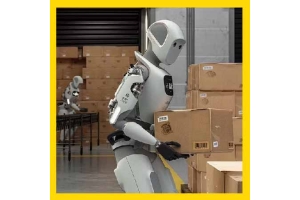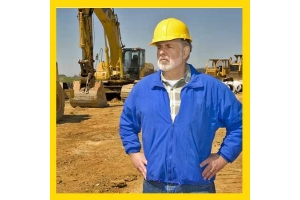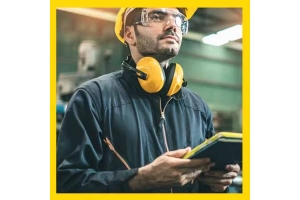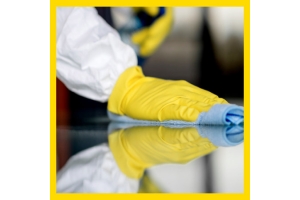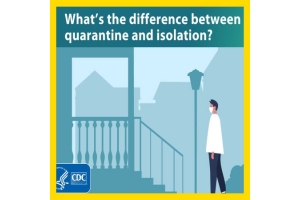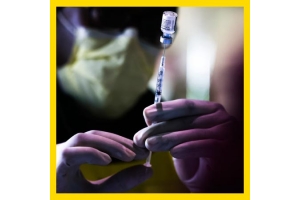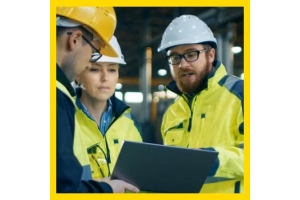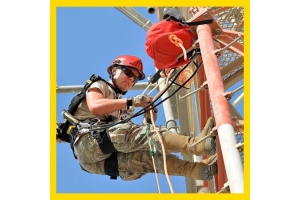Currency
-
September 27, 2020OSHA’s 7th annual National Stand-Down to Prevent Falls in Construction will take place virtually this week from Sept. 14-18, 2020.
The Stand-Down was created to spread awareness of workplace safety measures and foster dialogue between employees and employers in hopes of decreasing preventable deaths on the job. Employers are encouraged to pause during the workday to conduct safety demonstrations and train employees in hazard recognition.
OSHA has published a calendar that details events for the week-long stand down, which includes a Fall Hazard Awareness for the Construction Industry video conference on Tuesday from 8 a.m. to 1:30 p.m. Other events that employees can attend are the National Roofing Contractors Association (NRCA) presentations on Tuesday, Wednesday and Thursday, which will feature fall-protection topics. There will also be a panel hosted by the Latino Worker -
September 27, 2020West Lafayette, IN — Researchers from Purdue University have developed new designs for N95 facemasks they say will extend the shelf life of the respiratory protection commonly used by health care workers.
As demand for N95s has risen during the COVID-19 pandemic, shortages have occurred, making stockpiling and long-term storage of the respirators a standard practice among health care employers. The researchers note, however, that the longevity of the masks is largely affected by the rubber, which deteriorates over time, in the elastic band that secures the mask to the user’s face.
“We designed a way to create the masks using the same filter material on the front, but with different materials for the band and with novel attachment locations and methods,” Hersh Rai, a graduate student in computer and information technology, said in a June 23 university press -
September 27, 2020It's that time of year again: As the mercury rises, so too does the risk of heat stress for employees on industrial worksites. This is nothing new for safety leaders. What is new, of course, is the external environment, which differs in ways that would have been unimaginable in previous summers.
What does that mean for organizational leaders? Two things, most of all:
● Safety risks are now linked to far broader reputational concerns due to COVID-19 that are going to positively or negatively impact employer brands over the long term.
● Handling seasonal heat stress is going to be harder due to COVID-19 requirements like personal protective equipment (PPE) and social distancing, but there are specific steps you can take to help mitigate those challenges.
Let's look at both pieces of this puzzle in greater detail, including best practices for forward-thinking leadership. Here are three insights about COVID-19, heat safety and what you can do to help -
September 27, 2020The supply chain is a part of every industry. Businesses, manufacturing plants and factories must be operational to keep supply chains going for food, technology and all types of commerce. With COVID-19 disrupting the entire world, safety is now a top priority.
As industries start their shutdown re-openings, following OSHA standards and other COVID-19 reopening protocols from authorities is critical.
OSHA
The Occupational Safety and Health Administration (OSHA) is one of the best resources when it comes to information for industry. The guidelines it has released relate to manufacturing as a whole. Following these protocols is essential for any shutdown reopening.
Some key factors to keep in mind are sanitation and hygiene, social distancing and communication. Increased sanitation is necessary — with nonessential workers coming -
September 20, 2020Arlington, VA — Spurred by numerous fatalities related to the hazards of working near belt conveyors, the Mine Safety and Health Administration has issued a safety alert.
Published on Sept. 3, the alert states that eight fatalities involving belt conveyors have occurred in the industry since Jan. 26, 2017. Six involved miners working near a moving conveyor, and two occurred during maintenance on an idle conveyor.
“All of these fatalities could have been prevented with proper lockout/tagout and blocking against motion before working,” the alert states.
MSHA details the most recent incident, which occurred in December and remains under investigation. A miner was fatally injured after removing a splice pin from a mainline conveyor that was caught between the belt and frame of the belt tailpiece.
The agency lists multiple best practices for working -
September 20, 2020Respiratory protection programs all share one fundamental goal: to protect workers from harmful atmospheres as part of a hierarchy of controls within their workplace. But attaining that goal involves a lot of steps. For instance, there are federal regulations, and often additional state and industry standards, that you have to be in compliance with. There are various types of respirators for different industries and situations. And it’s also important to understand the need for respirators, how they work, and what their limitations are.
There are plenty of options when it comes to choosing self-contained breathing apparatus (SCBA), but how do you know which one is best suited for your unique environment and your workers’ needs? That’s where this e-book comes in. We’ll walk you through how to pick the right SCBA, and provide you with a starting point for comparing different -
September 20, 2020It’s no surprise that safety is top of mind for every worker on every job site. And yet, falls from elevation are still happening. In fact, according to the Occupational Safety and Health Administration (OSHA), falls from elevation continue to be the leading cause of death for construction employees.1
So, for the seventh year, OSHA is again sponsoring National Safety Stand-Down. This voluntary event, being held September 14-18, 2020, is designed to raise fall hazard awareness in order to stop fall fatalities and injuries. National Safety Stand-Down is also your opportunity to “walk the talk.”
Here are 5 things you can do during National Safety Stand-Down to show workers how much safety matters.
1: Get Real. Acknowledge the elephant in the room.Talking about safety can feel like somebody is reading from a book but never turns the page. Explain why you talk about safety so much. Share the hard truth and fast facts about fatalities. In -
September 20, 2020Summer may be officially over, but for many of us, the heat’s still on! In fact, just this July, the National Oceanic and Atmospheric Administration (NOAA) issued a La Niña Watch.1 That means it’s likely that much of the country may see above average or significantly above average temperatures well into fall. And whether your team is toiling in the outdoor heat or inside a hot facility, it’s better for your workers and better for your production to help everyone stay cool.
Cooler workers are more productive
It’s no secret that high temperatures can make people feel sluggish and less able to work efficiently. But recent research has documented exactly how much heat affects production. A 2014 study at the University of California at Berkeley found that hot environments can decrease productivity by up to 24%. Add in the cumulative effects of one hot day after another, and you could be getting significantly less done on the job site than you expected. -
September 13, 2020The oil industry has always been one which, to put it mildly, has been prone to risks and hazards. Even the most cursory of online searches will reveal countless industry disasters and sobering statistics. Whether it be onshore or offshore, oil production traditionally has been fraught with danger.
Over the past decade or so, however, things have begun to change. More stringent regulations have been introduced, more accountable and transparent legal frameworks have been put in place, and significant technological advancements have been made. All of which sees the industry in the safest position it’s ever been.
There’s no room for complacency, however. After all, the Deep-water Horizon disaster was only 10 years ago and while annual fatalities are indeed showing a downward trend, those are lives lost, not just some statistics. With that in mind, let’s look at how the industry is making proactive steps towards a safer future.
1. Drones
-
September 13, 2020COVID-19 was declared a pandemic by the World Health Organization (“WHO”) on March 11, 2020. Many Canadian provinces, including Ontario, declared a state of emergency under the Emergency Management and Civil Protection Act (“EMCPA”) on March 17, 2020. The federal government did not invoke its emergency management legislation. The COVID-19 pandemic has been highly disruptive of socio-economic activity in Canada, and around the world. This has given rise to governance and leadership challenges, and decisions regarding the state of the workplace, and exposure to workers, as well as clients/customers/patients in many businesses, workplaces and organizations across Canada. COVID-19 has also raised a number of questions about emergency preparedness, business continuity, and pandemic planning by governance experts and Boards of Directors (“Board(s)”) of public and private corporations and organizations.
Construction companies have a number of risks associated with COVID-19 pandemic.

